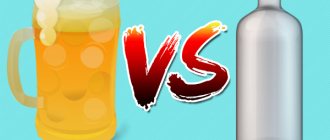What is a "selfie"?
In 2013, this word became the most popular in the world. Selfie, or “crossbow”, “self-shot” is taking a photograph of yourself. Previously, such shots were taken using a mirror, today - using a monopod (a special selfie stick).
There are many types of this hobby:
- relfi – photo with a loved one;
- liftlook – shot in the elevator mirror;
- duckface – “duck face”, used by girls by protruding their lips;
- belfie - a photograph of your buttocks;
- shufiz – feet in shoes on a different background;
- extreme selfie – when doing extreme sports or in dangerous situations (on the edge of a roof, cliff).
There are other types of self-photos that depend on the situations and nature of the shoot. To stand out and attract attention, monster selfies (presenting oneself as a monster) and scotchlook (an image with a face covered with tape) appear. What causes the increased interest in such a pastime, why does a painful craving for it arise, the so-called selfie mania, and how to get rid of it?
Treatment options
It is possible to cure such a disease. There are 2 ways – self-treatment and working with a psychologist.
Self-deliverance
The best way is to play sports. Start dancing, going to the gym or doing other types of physical activity. Be sure to put your phone away. If the activity is exciting, the patient will not even remember about the gadget.
Other methods:
- Notepad and pen. If the patient sees a beautiful landscape, you need to take a notebook and pen out of your bag. You need to write down your own impressions. Explain in writing what he liked, what impressed him most, and how he felt looking at the beautiful object. An ordinary selfie is often taken mechanically, without a detailed consideration of the sights. Therefore, in addition to getting rid of the disease, the addict learns to look at the world differently and really enjoy what he sees. Usually, after this you don’t want to photograph the object.
- Making a plan for the day. You need to clearly schedule your day. Allow yourself to take 1 selfie every 2-4 hours. It is important to reduce the number of shots gradually so that it does not cause stress. This technique helps you become disciplined, self-confident and not waste time on stupid activities.
- Engage in self-development. In addition to physical activity, it is necessary to engage in personal growth. Having problems in communication, read books on psychology, about how a person works, watch educational films, learn unusual types of art. An intelligent person is an interesting conversationalist.
It is necessary to conduct psychoanalysis and figure out what the patient is not satisfied with in himself. It is important to spend more time communicating with close, good friends. You need to enjoy spending time together with your loved one, and not force him to take a photo that no one needs every time.
Spending time alone is beneficial. You can go to a spa, learn how to cook an unusual dish, prepare a surprise for your family - there are many options.
Psychotherapy
Group therapy is the best way to help. The classes bring together people with self-mania. They discuss how the disease arose, what caused the interest in the constant desire to take selfies. They share their feelings about negative comments.
The psychotherapist asks all participants in the conversation to suggest options for getting rid of the disease. Everyone must come up with a unique idea.
All patients are given homework. This could be reading an interesting book, keeping a diary, communicating with loved ones, going to some establishment. At each session, participants report on the number of photos taken at the time of group therapy.
Symptoms of addiction
The following are considered signs of self-mania:
- a person takes at least three photographs of himself per day;
- posts these photos on social networks for public viewing;
- in the future, the person does not look at the photo, it loses its relevance, only the likes and comments are important;
- life-threatening situations arise due to selfies;
- When taking a selfie, a person loses the thread of the conversation with the interlocutor and is constantly distracted;
- there is an aggressive reaction to people’s comments;
- a feeling of loss, internal anxiety, if the phone is low, there is no camera, there is nothing to take pictures with.
In any case, an individual spends a lot of his life’s time first photographing everything, then processing the photo, posting it on the Internet, writing a description, and responding to comments. If about 30 photos are posted per day, then all free time, as well as working time, is spent on this, and not on oneself.
A person becomes psychologically exhausted and feels deprived of vitality, even though he hasn’t really done anything during the day. Such a pastime is unproductive and leads to regression.
Dangers and Consequences
The degree of egocentrism and narcissism increases significantly. When traveling, the patient, instead of enjoying nature, constantly takes selfies and walks around with a tripod or monopod in his hands. He is not interested in the beauty around him. The main thing is a cool photo.
In pursuit of a beautiful photo, an addict risks his life. There have already been many cases of death due to the desire to take a cool selfie.
Selfie lovers put their own lives on display. And often instead of approving comments they receive anger, criticism and insults. The result is a depressive state.
Causes
Teenagers are the most susceptible to selfie addiction. This is associated with the formation of the so-called “mirror” or social “I”. This characteristic gives the individual an answer to the question: “How do people around me see me?”
The teenager doubts himself, his attractiveness, and seeks confirmation of this. Selfies are a great opportunity to get feedback. But this response is as virtual as the social networks themselves. Due to the possibility of depersonalizing themselves on the Internet, people can simply write negative and rude things, play on feelings, knowing that they will go unpunished.
Most users do not look at photos at all, but like them automatically. The teenager does not yet understand these intricacies, so he quickly falls under the influence of the opinions of social networks.
In adults, self-mania is caused by personal infantilism, low self-esteem, self-doubt, and the search for social approval.
How to deal with selfism
Selfie addiction, according to scientists, occurs most often in those people who are predisposed to various types of addictions. Therefore, when eliminating “selfism”, you need to pay attention to the reasons that influenced the emergence of this dependence. Selfie addiction is a modern “high-tech variation” of mental disorders that manifested themselves in the “pre-Internet” era: infatuation with one’s own appearance, narcissism, an inferiority complex, even autism spectrum disorders. What “selfism” has in common with an inferiority complex is the desire to get as many likes as possible on social networks.
One way or another, this addiction should be fought before the selfie hobby becomes painful. Psychologists recommend getting rid of “selfism” in several stages. First, you need to refrain from posting the photos you take on the Internet, which requires willpower. Then you need to delete the photos you just took. And at the next stage, you need to train yourself to look in the mirror instead of taking photographs. Standing in front of a mirror can also be a sign of psychological deficiency, but in this case it can be useful.
Selfies and popular culture
Selfies today have become an unusually fashionable trend in social culture. Trying to capture themselves in interesting places or unusual poses, selfie lovers think that they can get into history. There are many poses and varieties of selfies, and many have special names. So, “felfi” is a selfie with animals, “grufi” is a group selfie, “belfie” is a photo with protruding buttocks; There are poses like “selfie in the elevator”, “selfie in the toilet”, “duck lips” - and others.
Selfies have become the property of not only ordinary people, but also celebrities. And if this hobby is quite understandable in relation to actors and singers, then among politicians and public figures it does not look quite common. “Sebs” were posted online by Dmitry Medvedev, Barack Obama, the Pope and other famous personalities. Such photographs are received ambiguously by the public; Thus, a photo of Obama, where he attends a funeral and at the same time shows a good mood, became the reason for noisy disagreements. Apparently, selfies of politicians are a special form of public relations, but instead of sympathy, the result is often the opposite: such self-portraits become material for compromising evidence from political competitors.
Selfies have also become an element of extreme culture. Photos from airplanes, on the roofs of high-rise buildings and skyscrapers, and in other similar environments are an impressive sight, but the hobby for them is life-threatening. There are especially many people who take pictures of themselves while driving a car. Such extreme sportsmen end up in the hands of the traffic police, but they admit that after meeting with law enforcement officers, their desire to be photographed while driving has not disappeared - they simply cannot help themselves. The inscriptions (tags) with which they accompany their photos also raise concerns: along with harmless options like “I miss you,” there are also such as “Dangerous,” “Luckily, we didn’t crash,” “Look how I ride without hands,” and etc.
One of the most popular Russian selfists is Kirill Oreshkin. In pursuit of new personnel, he conquers ever new and increasingly dangerous peaks. In this case, selfie is an extreme art, and there are different opinions in society about its acceptability (more precisely, about the acceptability of such types of art in general). Passion for this art can also develop into a disease, so it’s not worth taking unnecessary risks.
Selfie addiction in a child
For parents, the craze for selfies of their children raises concerns about the content of the photos. Teenagers photograph themselves with a cigarette in their mouth, with alcohol, in erotic poses. Such selfies are a destructive form of mass culture, in which, according to parents, children are involved, because they are both the authors and spectators of such “photo masterpieces.” However, the selfies themselves have nothing to do with it: after all, long before the spread of this hobby, children listened to music and watched films with dubious content. A selfie is only a reflection of the child’s inner world; it does not give rise to debauchery, but only demonstrates it.
The scale of selfie addiction will help to reduce... the selfie addiction itself, which develops according to the laws of mass culture. In other words, when there are too many selfies, the public’s interest in this hobby will begin to wane, so the incentive to take new photos will also fall. Of course, the selfie culture itself will not disappear; it will only take its place among other popular hobbies.
Author: Sergey Semenov
We also recommend reading:
- Storytelling
- Imprinting: what is it and how does it work
- What is addiction and how to overcome it
- Streisand effect
- Be careful: dihydrogen monoxide
- What is Internet addiction and how to deal with it
- Brain digest
- How to go offline
- Gaming addiction
- 6 useful skills you can master in 6 months
- How to make money on Instagram
Key words:1Psychoregulation
Possible consequences
It was said earlier that any addiction takes up precious time, disrupts personality development, and destroys communication. In addition, in people with selfie addiction, all mental processes are disrupted.
First of all, they are often distracted and forget about important matters and meetings. Thinking degrades and becomes more visually effective: I saw it, I took a photograph. Due to the reduction in the circle of real communication, speech becomes simpler and vocabulary narrows. People switch to a visual perception of reality, and less attention is paid to auditory and bodily sensations. They become prone to taking risks in order to take a successful photo.
When a person begins to realize his problem, anger towards other people and auto-aggression arises. The individual feels inner emptiness, loneliness, misunderstanding from others. Here the help of a psychologist or psychotherapist will be required.
Passion for selfies: the dangers of selfie addiction
Just over the past few years, a new hobby of our contemporaries has rapidly burst into our lives - photographing ourselves, called selfies. It will no longer surprise anyone that people around them tirelessly take pictures of themselves, take their own portraits on cameras, mobile phones, and tablets against the backdrop of natural landscapes, beautiful architectural structures, and landmarks. The English word “selfie” also has domestic counterparts. A self-portrait taken independently with a digital camera or a mobile phone with a camera is colloquially called “self-portrait”, “crossbow”. Passion for selfies: is the love of photographing yourself so harmless?
At first glance, there is nothing reprehensible or harmful in a person’s recording of his own appearance. However, for some people such a “harmless” activity very quickly leads to the fact that they cannot live even an hour without taking a photo. Such people do not let go of their gadgets and perceive reality through the lens of a camera. The need to take a selfie turns into an obsessive and uncontrollable dominant desire. An uncontrollable passion for selfies takes over the subject's entire thinking and requires a radical change in his typical behavior. Over time, the desire to photograph yourself transforms into an insurmountable addiction. Today, world luminaries of psychiatry classify the addiction to selfies as a type of addiction and place the passion for photographing oneself on a par with other types of psychological (non-chemical) addictions, such as gambling addiction, shopaholism, and psychogenic overeating. Some scientists consider selfie addiction as a variation in the course of obsessive-compulsive neurosis, and in more severe cases, as a clinical form of obsessive-compulsive disorder. In the United States, the addiction to taking selfies has been classified as a psychotic spectrum disorder. Employees of the American Psychotherapeutic Association gave the name to this addiction - selfitis (selfitis) and characterized this anomaly as an obsessive (involuntary) desire to photograph oneself, post self-portraits on social networks and compulsive (obsessive) actions performed for this. In the territories of post-Soviet states, selfie addiction is interpreted as a type of addiction - an obsessive need felt by a person to perform certain acts. Selfie addiction involves the regular repetition of certain actions that interfere with full social adaptation, violate an individual’s worldview, and interfere with quality interpersonal communication, which makes a person’s personal development impossible. Today, unique subtypes of this hobby have been described. Among the most common selfie options:
- relfi (Relfie from Relationship selfie) - a self-portrait with a loved one or relative;
- elevator look (elevator + from the English look - look) - a photograph taken in an elevator equipped with a mirror;
- duck selfie or duckface – self-portraits in which photos artificially protrude lips are emphasized;
- Group Panoramic Selfie – panoramic group shots;
- Belfie (Butt-selfie) – capturing your own buttocks;
- bifi (Bikini Selfie) – self-portrait in a bikini;
- shufiz (Shoes Selfie) – photographing your own feet in shoes;
- sagli (Uglies Selfie) - creating an ugly appearance for yourself;
- Scotchselfie (Sellotape selfie) – a photo with your head wrapped in tape;
- extreme selfie - a self-portrait on the roof of a skyscraper, near a cliff, on a cliff, while engaged in extreme activities.
- he takes at least three self-portraits every day;
- the subject regularly accesses Internet sites and posts all received photographs on social networks;
- he strives to ensure that the photographs posted are available for public viewing;
- he expects to receive “likes” on posted photos;
- in the future, the individual does not look through the existing photo archive; only the comments of other people are important to him.
- When making a self-portrait, a person “disconnects” from reality, he loses the essence of the conversation with a companion, looks dreamy and detached, becomes inattentive and uncollected;
- the subject experiences irritation and aggressive behavior if he receives comments about his excessive enthusiasm;
- the person spends a lot of time on his addiction;
- the individual stops communicating with people who are not interested in selfies;
- for the sake of his hobby, a person refuses other entertainment activities and friendly communication;
- due to the fact that the person’s thinking is occupied exclusively with thoughts of selfies, professional activity suffers;
- due to an addiction to taking self-portraits, a person has problems in the family;
- if a person’s phone or other photographing device is discharged or malfunctions, he feels restless, anxious, becomes nervous and irritable;
- thoughts about selfies do not leave a person at night, which is why the quality of sleep deteriorates and insomnia occurs;
- a person stops feeling hungry and may not eat or drink if he has the opportunity to take some unusual photograph.
Selfie addiction: why a hobby transforms into a disorder
The emergence of such a hobby and its lightning-fast transformation into an addiction is due to three factors: the rapid improvement of technology, the increase in the number of users of social networks and the deterioration of the mental health of the population.
As sociological studies show, children and adolescents are more susceptible to selfie addiction, which can be explained by incomplete development of the psyche and immaturity of the individual. Very often, the addiction to selfies is associated with bullying and moral violence experienced by a person in the past. A teenager who grew up in an antisocial environment, was regularly insulted and criticized, suffered humiliation, has serious psychological problems that push him to search for options to “correct” reality. The passion of taking selfies is nothing more than a way to escape from the real world. The high risk of developing selfie addiction in childhood can be explained by another factor. During childhood and adolescence, the formation of a structural component of the personality—the social “I”—occurs. This element allows a teenager to determine how other people see and perceive him. And taking self-portraits is an option for viewing your own appearance from the outside. Why does selfie addiction develop in teenagers? Many girls and boys doubt their external attractiveness due to existing complexes. To gain self-confidence, they need confirmation of their merits from the outside. Taking selfies, posting them on social networks, receiving “likes” is proof for immature people of their attractiveness and need. Another reason for selfie addiction is a person’s search for outside approval. Teenagers do not realize that many users of social networks automatically put o under photographs, without delving into the details of what kind of person is captured in the frame. Young people perceive the marks they receive as the truthful and true opinion of others. This is why guys very quickly become dependent on “likes” given for selfies. In adults, a common cause of selfie addiction is personal infantilism. Lack of development of the emotional-volitional sphere, inability to make independent decisions, lack of a clear belief system, lack of understanding of one’s place in life, and disruption of socialization mechanisms give rise to the formation of various harmful addictions, including the obsessive need to take selfies. Another cause of selfitis is narcissism - a serious personal dysfunction characterized by excessive narcissism and self-idealization, and the presence of excessively inflated self-esteem. With narcissism, the subject’s assessment of his own characteristics does not correspond to the real situation. Such persons are convinced of their own uniqueness and have an inflated estimate of their existing talents. They treat others with contempt and disdain and strive with all their might to prove their own superiority. By taking selfies, narcissistic individuals seek confirmation of their own superiority. Selfie addiction often develops among lonely people or those who are terrified of loneliness. Taking self-portraits and posting pictures on social networks is a way of filling an existing gap in communication, an action that allows you to feel a close connection with some other people. At the same time, such persons do not have a clear differentiation between real “live” intimacy and virtual contacts. Selfie addiction: stages of the disorder
Doctors indicate that selfie addiction can occur with varying degrees of severity.
According to the criteria recommended by the American Psychiatric Association, selfie addiction can occur in three forms (stages). The initial phase or borderline selfitis is characterized by the fact that the subject takes at least three self-portraits every day, but he still does not have the need to post frames on social networks. With a mild course of the disorder, people can independently get rid of abnormal obsessive passion by making adjustments to their existing lifestyle and working on their personality. The phase of aggravation of the disorder or acute selfitis manifests itself in the fact that a person takes at least three photographs during the day. However, he already has an uncontrollable urge to post every frame he receives on Internet sites. For patients with moderate severity of addiction, it will be enough to consult a psychologist and undergo a course of psychotherapeutic treatment. Chronic selfitis is characterized by the presence in the subject of an uncontrollable irrational obsessive need to photograph himself continuously. At the same time, a person posts almost all the pictures he receives in virtual space more than six times a day. In severe forms of addiction, psychiatrists prescribe medication to patients, supplementing it with psychotherapeutic influence and hypnosis. Selfie addiction: symptoms of the disorder
You can assume the transformation of a harmless hobby into an addiction if a person has the following signs:
Dangerous symptoms indicating aggravation of selfie addiction are the following:
The fact that a person requires emergency medical care is indicated by the occurrence of situations in the subject’s life that threaten life and health. In the case of extreme selfies, the individual is not stopped from taking self-portraits by the real danger that exists in high-altitude areas. For the sake of an extraordinary shot, selfie-addicted people do crazy things: they drive cars at breakneck speed, creating emergency situations. The instinct of self-preservation does not stop them, and they jump from car to car of a moving train. Why selfie addiction is dangerous: the consequences of addiction
Selfie addiction not only takes away a person’s invaluable time, but also acts as a harmful factor for physical and mental health, and often even threatens premature death.
Trying to outdo other people, a person pursues the goal of taking unusual pictures, risking his own health and life. The media have described many cases where, in order to obtain an extraordinary photograph, people inadvertently fell out of the windows of multi-story buildings. They ended up in intensive care with bruises, fractures, concussions or burns. They lost limbs or were forced to use a wheelchair. Today, newspapers are full of information that, in an effort to take a unique self-portrait, people have fallen under the wheels of a train or died in a car accident. In addition to serious injuries and premature death, excessive addiction to photographing oneself threatens the development of epileptic seizures. Epileptic seizures can occur due to bright camera flashes when taking pictures and high-frequency flickering of the computer monitor when posting photos. Rospotrebnadzor also informed fellow citizens that the passion for taking group selfies threatens the rapid spread of lice. This is explained by the fact that when taking a group photo, the participants' heads touch each other, so the transmission of lice occurs rapidly. Selfie addiction leads to personality degradation, since the passion for photographing oneself deprives the subject of the opportunity to fully participate in other areas of life. In addicted individuals, cognitive abilities deteriorate and memory function suffers. Concomitant pathologies appear - neurotic and often psychotic disorders. A person suffering from selfie addiction loses the ability to self-control and self-criticism disappears. As the disorder develops, disturbances in the emotional sphere, such as flattened affect, appear and become pronounced. This phenomenon implies a significant impoverishment of the emotional sphere, when a person loses the ability to experience deep feelings. A person becomes callous, indifferent, and cruel. The subject's thinking loses the ability for logical analysis and becomes visually effective. Due to the lack of real communication, a person’s speech capabilities deteriorate and vocabulary is reduced. The person remains capable of only visual perception of reality, without understanding verbal signals, without recognizing his own bodily sensations. The individual becomes irresponsible and undisciplined, conflictual and hot-tempered. Treatment of selfie addiction: real help
Since it is impossible to overcome selfie addiction in one day, phased treatment is necessary to eliminate the disorder. At the beginning of therapy, a psychiatrist or psychologist consults the patient regarding existing treatment methods and determines the characteristics of his personality. The main goal at this stage of treatment is to create sustainable motivation to overcome the disorder and return to society as an active participant. At the second stage of treatment for selfie addiction, hypnosis techniques and cognitive behavioral therapy techniques are used. If necessary, pharmacological drugs are included in the treatment program. Specific drug therapy for selfie addiction has not been developed today; therefore, drugs are used for symptomatic treatment that can eliminate the unpleasant manifestations of the disorder. To stop the pathological passion for selfies, atypical antipsychotics or opiate receptor blockers are used. To eliminate anxiety and depressive conditions, SSRI antidepressants and benzodiazepine tranquilizers are prescribed. To stabilize mood, mood stabilizers are used. After eliminating the obsessive desire, it is extremely important to carry out rehabilitation measures. Their goal is to teach the patient methods of controlling their behavior, accelerate the development of a functional model of behavior, and build resistance to returning to taking selfies.
Treatment of self-mania
Working with specialists to overcome selfie addiction lasts approximately six months. It includes individual and group forms of work.
First, the true causes of addiction are clarified, since it is usually a defensive reaction to certain events or internal states. When the cause is found, adequate ways to overcome it are selected. Clients are taught to be distracted, spend time actively, and make new acquaintances in real, not virtual life.
The benefits of selfies
Selfies also have a purely practical side:
- Record your success in losing weight. You don’t have to post it, but sometimes you want to be happy for yourself publicly.
- Get support, share sadness or joy. Selfies are great at conveying emotions. True, if a person in real life has someone to talk to, then he is unlikely to run to tell the world about his failures. But sometimes you really want to shout to the whole world about joy. That's what selfies are for.
- Do something nice for a friend. Imagine that you received a long-awaited package in the mail with a warm sweater. The person who gave the gift will be pleased to see a selfie of you wearing this sweater.
- Confirming your location for your boss or jealous spouse. Not the best example, but it also happens.
- Self-motivation. For some people, a selfie page is simply a virtual photo album that reminds them of significant events.
It’s not scary if a selfie is one of the ways to receive attention, love, support, and care. If this is just an addition, if a person is not ready to jump off a cliff for the sake of a like, then this can be called healthy psychotherapy. Everyone has their own level of need for attention.
How to get rid of selfie addiction yourself
However, not all people are ready to go to a psychologist and speak openly about their problem. If selfie addiction has been discovered, you can try and solve the problem yourself. But only a strong-willed and organized person is capable of this.
First of all, you need to put a notepad and pen along with your phone or camera. As soon as you want to take photographs, you should take notes and note what you want to capture, why, and how you feel. It has been proven that such notes allow you to look at the world differently, develop mental processes, and discipline. Usually, after you have written down your feelings, you no longer want to photograph them.
You need to clearly plan your day, stick to a schedule in which you can allocate time for photographs, but know that you can only take one shot. Thanks to this technique, a person develops observation, attention to his life, and selectively relates to what is happening.
A good way to get rid of addiction would be to switch to some active form of recreation, sports, dancing, during which it is impossible to always be with the phone in your hand.
Selfie addiction is the youngest type of addictive behavior, and it mainly affects people under 30 years of age. To overcome the painful craving for photography, you need to pay more attention to yourself, plan your day, including mandatory communication with relatives and friends in your routine. The same methods are also useful for preventing self-mania. In addition, understand what this dependence gives, and then choose adequate ways to fulfill your needs.
Psychological reasons
We have already come to the answer. First of all, the incentive is the system of values and needs of the individual.
- Those who are not satisfied with their own lives like to fake photos for the Internet. The same is true for photo processing. We are not talking about beautiful professional photography now. We are talking about the abuse of Photoshop, changing your own figure, eye color, etc.
- Those who are truly financially secure post real photos on Instagram to arouse the envy of other people, to show off, to increase self-esteem, and to assert themselves.
- There is a third category of people. Those who simply love themselves have narcissistic traits in their character.
- Sometimes a selfie is accompanied by really interesting information or a demonstration of a beautiful place or an exciting event. “But why not just take a photo of your surroundings?” you ask. The author wants to show maximum involvement in what is happening, to clearly prove that he was there. Otherwise, try to prove to the public that it was just him who took the photograph. This stems from the need for attention, significance, involvement in something important. At least important from the author's point of view. And more often than not, he wants to receive support, approval, and a positive assessment of his actions.
- For still fragile individuals, selfies are a form of self-knowledge. More precisely, a person finds out how the world wants to see him. Comments, likes, and dislikes form an individual’s idea of the acceptability or impermissibility of actions, emotions, and places captured in the photo. A new hair color, a hairstyle, hobbies, training courses - an undecided and insecure person yearns to receive an answer from society for everything.
- There are people who enjoy public life. They don’t want to offend anyone, to rise up. They just want to show off. As a rule, active selfie users have a circle of admirers and admirers. This is a kind of fame game. You can, of course, go further and assume that this is an unfulfilled need for love, a consequence of loneliness. But, as Freud said, “sometimes a cigarette is just a cigarette.” There are people with demonstrative traits.
Interesting fact! According to one theory, the addiction to selfies is the result of a desire to harmonize the environment, to experience and accept an unsatisfactory reality. In psychology there is a concept of aestheticization. This is a defense mechanism in which a person attaches aesthetic significance to traumatic things.
This may mean you are a loner
The difference between a regular photograph and a selfie is that a person takes a photo for himself to ensure the beauty of the photo. It's quite normal. After all, most people want to look good in their photos, so what's the problem? The first problem is human loneliness.
“A completely different person”: Maxim Galkin shared rare photos from his youth
Old garbage is history: landfills are sites for future excavations
iOS 14 app rollout will bring big changes to iPhone home screen
If a person takes too many pictures, it immediately comes to mind that he is lonely. Normal people take photographs to capture pleasant moments, but if a person always takes pictures only of himself, this means that he has problems in his personal life.











